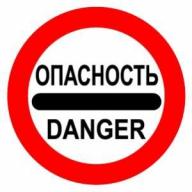Operator cellular communication MTS keeps pace with the times, providing its users not only with new opportunities, but also trying to modernize and improve the quality of existing services. Now the speed in the 3G network will be able to reach the speed of the 4G network.
Users of MTS services for accessing the World Wide Web via a 3G connection will theoretically be able to experience all the benefits of the Internet at a speed of 63 Mbps. However, this value is nominal, so you should not rely on it. On average, the data transfer rate in 3G networks from MTS will not differ from that for 4G LTE coverage and will reach 20 Mbps. For comparison, below are the average and maximum speeds in the LTE networks of the largest US operators:

If we compare the new numbers with the previous values, then the increase in speed will be noticeable to the naked eye. So, for example, previously a proprietary 3G network with support for Dual Carrier-HSDPA + technology (combining operator carrier frequencies) gave the user a maximum of 42 Mbps, and a wireless network with HSPA + (the presence of multi-input and multi-output technologies, as well as complex modulations) made it possible to achieve the maximum is only 21 Mbps.

This high-quality conversion became available after dividing the radio frequency band in the 2100 MHz range into 3 separate channels. Base station upgrades have been completed in 80 regions across the Russian Federation. According to experts, the total cost of such engineering works according to conservative estimates, the company cost at least $ 20 million to re-equip the equipment.
What is the speed of the 4G standard - frequently asked in search engines inquiry. They are interested in users who have already switched or are planning to switch to the use of a fourth-generation mobile network. However, before replacing a SIM card in a smartphone or modem with a new one, it is worth finding out what is the difference in third and fourth generation technologies, what is the difference in speed, stability and quality of coverage.
The mobile Internet is rapidly developing, replacing other forms of communication. Operators are constantly working to improve quality and increase speed, however, how does this affect the conditions of subscribers?
In domestic conditions and throughout the world, there are certain games of operators. They consist in the fact that the full name of the technology is presented as 4G LTE. However, LTE is the fourth generation standard, but in fact it is an improved 3G. Definitely, he does not live up to the characteristics of a full-fledged fourth generation.
Note! The development and regulation of the cellular communication market is carried out by a special organization - the International Telecommunication Union. It was introduced in 2008. Since then, there has been a continuous development and smooth implementation of it around the world.
The technology is based on the packet principle of information transfer. This makes it possible to obtain such impressive declared application speeds as 1 Gbps. But such a high real speed of the 4G standard is difficult to achieve, and not a single world network can boast of such a result.
Base stations, or simply towers of various operators, are capable of transmitting data over a distance of 100 km. But this requires ideal flat terrain without various obstacles: hills, ravines, forests, etc.

Special protocols of the International Telecommunication Union have set the Internet speed as a standard, which must be at least 100 Mbps for objects in motion. As for fixed land access points, i.e. modems or static phones, the transfer rate should be up to 1 Gbps. Today, however, the actual numbers are much lower.
Note! The speed is very dependent on the distance to the base station and the presence of obstacles.
The maximum efforts of developers today are directed towards the use of orthogonal transmitted frequency division multiplexing (OFDM) technology. For users who have access to data transmission using a modem, the applicable good way enhancing the quality and speed of transmitted and received traffic - MIMO technology. This means that the antennas for receiving and transmitting information are located so that the greatest correlation is obtained in nearby devices.
Regarding the differences between 4G and the third generation standard, its support is fully functional using the batch method. This gives more speed and throughput. 3G boasts only partial packet transmission, while the largest part is still taken over by channel transmission. Voice messages are sent and received using Voice over LTE.
Important! In the cities of Russia, the speed of 4G is pretty good, which cannot be said about the suburbs and remote areas.

What factors affect the speed
It is noteworthy that after conducting one test and after a while another, while not moving the phone, you can see that the speed of the speed is constantly changing. This is due to various factors, the appearance or disappearance of frequency interference, the movement of large objects and other reasons.
However, there is a certain set of factors that affect the operation of the mobile network:
- the distance of the user's device to the operator's base station. For some networks, operators further limit coverage areas. In this case, the phone, modem or tablet will show that they are within the 4G network, but the speed will not be high;
- if the subscriber is in the city, then great importance plays the absence of interference. The fewer of them, the better will be the quality of Internet use. In addition, the main problem is the presence of signals reflected several times from different surfaces;
- directly affects the number of users simultaneously connected to the relay antenna. There is also an indirect factor - the time period of application. At night, the speed is consistently higher, because most of subscribers simply do not use the Internet;
- technical characteristics of a smartphone, tablet or modem. Even for one manufacturer, the use of fourth-generation networks for data exchange is fundamentally different for flagship models and budget lines.
The development of mobile communications does not stand still, so providers are developing standards and technologies.
Note! There is a constant improvement of equipment and software to provide subscribers with the most stable and high-quality connection with high bandwidth.
The difference in speed between the fourth and third generations
The third generation technology is a mobile information transfer standard with the possibility of high-speed access to the global network and mobile communications. The date of creation is 1999. Despite this, the real introduction and distribution of 3G began later. The popularity of 3G is still the highest among all mobile operators.
In domestic conditions, the coverage area of the 3 ji standard far exceeds the coverage of the follower. In addition, this greatly affects the real speed, since 3G operates at its maximum capacity, at a time when the newer connection fully works only in cities.
To date, the only problem with the 3G standard so far is its slower speed compared to the fourth generation. It is:
- for users with a high level of mobility (up to 120 km/h) - at least 144 Kbps;
- for users with a low level of mobility (up to 3 km / h) - 384 Kbps;
- for stationary objects - 2048 Kbps.
The data transfer rate of the 4G standard is:
- the 4G LTE standard boasts data transfer speeds of real 60 Mbps;
- speed of 100 Mbps should be provided to highly mobile users, such as trains and cars in motion;
- users with little mobility, such as pedestrians and fixed subscribers, should be provided with 1 Gbps.

In a detailed comparison, it becomes clear that the fourth generation technology is 10 or more times faster than its predecessor. In addition, 4G has a number of advantages. For example, in the absence of the proper quality of coverage or connection, it automatically changes to an older one. In the case of 3G, the situation is the same, but there the previous minimum standard is EDGE, the appearance of which clearly does not please subscribers.
Note! The process of changing the standard in the case of a newer one is as smooth as possible, and even downloads or voice data transmission are not interrupted. This is due to the use of the packet transfer method.
It is clear that the fourth generation technology works and should function much faster, because it is a newer stage in evolution.
How to check speed
It is important for any user to know how to check the speed of the mobile network. There are many different websites and applications for this. You can choose the most convenient way and use. One of the first such sites is Speedtest.net. It is available as a program, application for smartphones. You can also check the speed by going directly to the site. The program shows download, transfer and ping speed.
The principle of operation is that the program connects to the nearest server at the base station and measures various indicators. This allows you to measure the speed of information transfer as accurately as possible.
Note! During the measurement, you need to stop all downloads and close third-party applications that use the Internet. This will allow you to achieve the most accurate and high-quality measurement. It is also desirable to be in a stationary state, otherwise the speed of the network can change dramatically. In this case, it will be impossible to get a real result.
Frequency bands
Most domestic mobile operators use almost identical frequency ranges for communication:
- operator "Yota" operates in 2500-2530 / 2620-2650 MHz;
- Megafon uses 2530-2540/2650-2660; 2575-2595; 847-854.5/806-813.5MHz;
- for the MTS operator, the frequencies are 2540-2550/2660-2670; 2595-2615; 1710-1785/1805-1880; 839.5-847/798.5-806 MHz;
- for Beeline, 2550-2560 / 2670-2680 are allocated; 854.5-862/813.5-821MHz;
- Tele2 operates at 2560-2570/2680-2690; 832-839.5/791-798.5 MHz.
Note! There are fewer mobile operators in Europe, so fewer frequency bands are used.
For European subscribers, the following frequencies apply:
- 4G FDD Band 8 880.1 - 889.9 MHz, 925.1 - 934.9 MHz, 2 × 9.8 - operator "Orange France";
- 4G FDD Band 3 1710 - 1785 MHz, 1805 - 1880 MHz 2 × 75 - operators "Orange France", SFR, "Bouygues Telecom", "Free Mobile";
- 4G FDD Band 1 2100 MHz - 2 × 60 - only "Orange France";
- 4G FDD Band 7 2500 - 2570 MHz, 2620 - 2690 - 2 × 75 - operators "Orange France", SFR, "Bouygues Telecom", "Free Mobile".
In the United States of America, the following frequency bands are used:
- B2 at frequencies from 1850 to 1910 MHz and from 1930 to 1990 MHz. Operators: T-Mobile, MetroPCS (General Wireless);
- B4. Used by AT&T, T-Mobile, MetroPCS;
- B13 for the provider "Verizon";
- B2, B4, B5, B17, AT only
- B25, B26, "Sprint" only.
The real speed of the 4G Internet from domestic operators
The US company Ookla, which is the manufacturer of the well-known Speedtest.net, carried out special measurements throughout Russia. In total, about 8 million inspections were carried out throughout the country in various standards. In addition, almost 1.5 million devices from various manufacturers were used.

- MegaFon turned out to be the fastest cellular operator in Russia in terms of cellular Internet, which showed 24.68 Mbps for download and 10.57 Mbps for upload;
- after him, the second place is occupied by MTS with indicators of 15.49 Mbps and 6.96 Mbps for downloading and uploading, respectively;
- also in the top three was the alternative mobile operator Tele2, which showed results of 13.83 Mbps and 6.5 Mbps;
- among all representatives of the so-called "Big Four" services, Beeline took the last place, which was able to provide indicators of 11.63 Mbps and 6.27 Mbps.
Note! As you can see from the final results, the leading company in terms of Internet speed is more than twice ahead of the trailing one.
The speed of the 4G standard is much faster than its predecessor, 3G. However, the real speed of the network is very much below the officially declared one gigabyte per second. Also frustrating is the rather weak development of technology, which so far only works normally in large cities.
It doesn’t matter what OS your smartphone is running on - Android, iOS or Windows Phone: in any case, the activation of the mobile Internet leads to the appearance of several bars on the top right, which indicate the strength of the signal available in the mobile network, and English letter- it can be E, 3G, H or H +.
And these letters have a certain meaning. Each of them points to specific view network protocol, while different protocols have different mobile Internet speeds.
Consider up-to-date information about each of the listed networks: their names, speed, capabilities, differences - in particular, H or 4G - which is better? H and 3G - what's the difference?
LTE - Long Term Evolution (4G)
Today, it is LTE that provides the highest Internet speed, which theoretically can reach 100 Mb / s. LTE speeds are faster than most home networks, allowing users to download even large files almost instantly, watch HD videos, listen to music online, and download websites on the fly.
LTE is often associated with 4G. But in fact, the 4G standard remains unattainable today, since it implies a speed of 1 Gb / s, which is 10 times the speed of current LTE networks. Alas, real 4G networks have not yet been created, and these 2 terms can be used as synonyms.
H+ (HSDPA Plus)
Represents the fastest network of all supported today in Russia. Its theoretical speed is from 21 to 42 Mb/s. On most Android smartphones, you can see the combination of characters "H +", but on Android version 4.4 it's just "H".
H+ makes it easy to watch HD videos online, its speed is comparable to the speed of a broadband home network.
H (HSDPA - High Speed Downlink Packet Access)

The basis of this protocol is UMTS (3G). However, it is a slower version of HSDPA Plus, the speed of which is only about 7.2 Mb / s, which is approximately equal to the lowest speed that is needed for comfortable viewing of HD video, Internet sites, listening to online audio.
3G (3rd Generation or UMTS)
3G is a digital network originally used for video calls that downloads at approximately 2 Mb/s (although originally only supported at approximately 384 Kb/s). That was the stage of absolutely decent Internet, most of the users at that time had smartphones that provide advanced features and need a good connection.
E - EDGE (Enhanced Data Rates for GSM Evolution)

Another name is 2.75G. Its speed is 384 Kb/s. It was created as a low-cost technology for mobile providers to upgrade 2G networks and move closer to 3G without having to invest in a completely new infrastructure. For a long time, Ukrainian mobile operators used this technology.
G - GPRS (General Packet Radio Service)
In the distant zero, he was nicknamed "butt cutter". It is a slightly faster version of the early GSM. The name 2.5G is also sometimes found, indicating that this is a more advanced version of 2G. Its speed is about 115 Kb / s, which was enough to download simple Internet pages and basic text data, for example, exchange rates. GPRS is the first service that provided a stable mobile Internet connection and the ability to quickly receive data from it.
Hello dear readers.
If you still do not know what 3G is, then it's time to get acquainted with this technology. After all, at the time of its appearance it became a breakthrough, today it is used by millions of people, and fourth-generation communication is already on its heels. So don't skip this short article.

Parsing the term
Let's start with what the letter "G" stands for. In this context, it is capitalized in the word "generation" (generation). It means that this is the third generation of communication. It is logical to assume that there were two more in front of him.
The first refers to the days when cell phones were so big and heavy that they could inflict grievous bodily harm. The second is the GSM (Global System for Mobile Communications) standard known to many.
So we got to what 3g is. What does it imply? This is a set of services that includes voice radio communication (in a simple way, phone calls) and high-speed mobile Internet for data transmission. To enjoy these benefits, you need a smartphone or modem that supports this standard.
Speed
Sophisticated modern technologies subscribers complain about the insufficient speed of mobile Internet. However, it is worth recognizing that, in comparison with its predecessor, 3G allows you to watch streaming video, make video calls and play online games even on your smartphone while on the go.
Judge for yourself: the maximum speed for highly mobile users (up to 120 km / h) is 144 kbps, for users with a speed of movement (up to 3 km / h) - 384 kbps, and if you sit in one place - 2048 kbps from.
Such standards for 3G are set by the International Telecommunication Union (ITU). In general, data is transmitted over such a network at a speed of 3.6 Mbps.

Communication continuity
Another advantage of 3G over GSM is that the connection drops less often. 2G had frequency and time separation of channels, so when moving between broadcast stations, data transmission could slow down or the connection could be completely interrupted.
The third generation solved this problem by using "soft handover". The principle of operation is as follows: when you move away from one access point, another one picks up the connection - to which you are approaching. It turns out that the first begins to transmit less and less data, and the second more and more.
If you are in a city where the coverage is good, then the possibility of a disconnection is excluded. To save space, mobile operators install their antennas on the roofs of buildings. They are able to pick up a signal from a mobile device at a distance of up to 35 km.

Standards
A few words for those who are interested in the technical side of the issue. 3G involves 5 specifications of the IMT-2000 family, including TD-CDMA / TD-SCDMA (the Chinese have their own technology), UWC-136 and DECT.
But two of the five received the greatest popularity. They are based on a modification of CDMA (Code Division Multiple Access). We are talking about UMTS (WCDMA) and CDMA2000 (IMT-MC).
The latter in Russia is caught at frequencies in the 450 MHz range. In general, this generation operates between the decimeter and centimeter ranges, that is, approximately in the space of 2 GHz.

That's all for what 3g is. I say goodbye to you until the next article on this site.
Everyone has repeatedly heard about networks of the second, third and fourth generation of mobile communications. Some may have already read about the networks of the future - the fifth generation. But questions - what does G, E, 3G, H, 3G +, 4G or LTE mean on a smartphone screen and what is faster among this are still of concern to many people. We will answer them.
These icons indicate the type of connection your smartphone, tablet or modem has to the mobile network.
1. G(GPRS - General Packet Radio Services): The slowest and most obsolete packet data connection option. The first mobile internet standard built on top of GSM (after a CSD connection up to 9.6 kbps). The maximum speed of the GPRS channel is 171.2 kbps. At the same time, the real one, as a rule, is an order of magnitude lower, and the Internet here is not always functional in principle.
2. E(EDGE or EGPRS - Enhanced Data rates for GSM Evolution): Faster add-on over 2G and 2.5G. Technology of digital data transmission. The speed of EDGE is about 3 times higher than GPRS: up to 474.6 kbps. However, it also belongs to the second generation of wireless communication and is already outdated. The real EDGE speed is usually kept in the region of 150-200 kbps and directly depends on the location of the subscriber - that is, the workload of the base station in a particular area.
3. 3 G(Third Generation - third generation). Here, not only data transfer is possible over the network, but also “voices”. The quality of voice transmission in 3G networks (if both interlocutors are within their range) can be an order of magnitude higher than in 2G (GSM). Internet speed in 3G is also much higher, and its quality, as a rule, is already quite sufficient for comfortable work on mobile devices and even desktop computers via USB modems. At the same time, your current position may affect the data transfer rate, incl. whether you are in one place or moving in transport:
- Stay still: typically up to 2 Mbps
- Drive at speeds up to 3 km/h: up to 384 kbps
- Travel at speeds up to 120 km/h: up to 144 kbps.
4. 3,5 G.3G+,h,H+(HSPDA - High-Speed Downlink Packet Access): The next high-speed packet data add-on is already over 3G. In this case, the data transfer rate is very close to 4G and in H mode it is up to 42 Mbps. IN real life mobile internet in this mode average works for mobile operators at speeds of 3-12 Mbps (sometimes higher). For those who do not understand: it is very fast and quite enough to watch online video in not too high quality (resolution) or download heavy files with a stable connection.
Also in 3G there was a video call function:
5. 4G, LTE(Long-Term Evolution - long-term development, the fourth generation of mobile Internet). This technology is used only for data transmission (not for "voice"). The maximum download speed here is up to 326 Mbps, upload - 172.8 Mbps. The real values are again an order of magnitude lower than the declared ones, but they still amount to tens of megabits per second (in practice, often comparable to mode H; in Moscow, usually 10-50 Mbps). At the same time, faster PING and the technology itself make 4G the most preferred standard for mobile Internet in modems. Smartphones and tablets in 4G (LTE) networks hold a battery charge longer than in 3G.
6. LTE-A(LTE Advanced - LTE upgrade). The peak data transfer rate here is up to 1 Gbps. In reality, the Internet is capable of operating at speeds up to 300 Mbps (5 times faster than conventional LTE).
7. VoLTE(Voice over LTE - voice over LTE, as an additional development of technology): a technology for transmitting voice calls over LTE networks based on IP Multimedia Subsystem (IMS). The connection speed is up to 5 times faster compared to 2G/3G, and the quality of the conversation itself and voice transmission is even higher and cleaner.
8. 5 G(fifth generation of cellular communications based on IMT-2020). The standard of the future is still under development and testing. The data transfer rate in the commercial version of the networks is promised to be up to 30 times higher than LTE: the maximum data transfer can be up to 10 Gb / s.
Of course, you can use any of the above technologies if your equipment supports it. Also, its work depends on the capabilities of the mobile operator itself at a particular location of the subscriber and his tariff plan.




